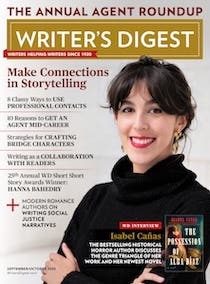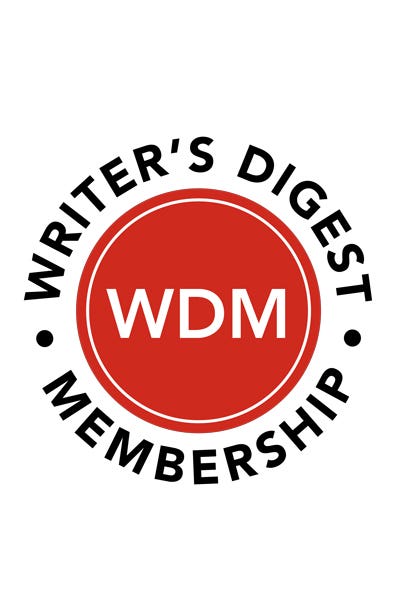6 Steps to Getting Your Query Letter Out of the Slush Pile
From how long it should be to how long publishers spend reading it, author Aileen Weintraub shares six steps to getting your query letter out of the slush pile.
You’ve just written the words “The End” on your manuscript or book proposal. You feel on top of the world. Now, all you have to do is find an agent or publisher interested in reading it. That means it’s time to write a standout query letter.
What Exactly Is a Query Letter Anyway?
A query letter is a one page, 300-500 word, three to five paragraph letter that explains the premise of your book, including the main themes, important plot points, and the characters. It also answers the questions:
- Why is my book unique?
- And
- Why am I qualified to write this book?
Agent’s inboxes can be filled to the brim with query letters. Your job is to make yours stand out from the rest. As a developmental editor and writing coach for Witches of Pitches, I always suggest my clients use these six simple steps to move their query letter out of the slush pile.
Step 1: Do Your Research
Before you even begin writing a query letter you need to make sure you know everything you possibly can about the agent you are about to query. Make sure the agent represents your genre and that they are taking on new authors. One way to research agents is by looking them up on Manuscript Wish List. You can also peruse Publisher’s Marketplace to see who is selling what books to which publishing houses.
Once you have found an agent you think will be a good fit for your manuscript or book proposal, head over to the agent’s website and look at their submission guidelines, and then do exactly as they ask. This may seem like a lot of legwork, but if you do your research it will show, and you won’t be wasting valuable time later on.
Step 2: Start with a Great Hook
Agents spend about 10 seconds on each query, and often have their assistants read through them first to pick out the ones of interest. If you have a personal connection to the agent, the opening sentence is the place to briefly mention this. Perhaps you’ve met them at a conference or you’re writing them based on a referral. Include pertinent information and then dive in!
The very first sentence about your book should hook the reader. Your hook might be a pivotal scene in your manuscript, or a fascinating fact directly related to your story. Make sure to include the title of your book and your word count in this paragraph, too!
Step 3: Leave Them Wanting More
The second paragraph of a query is a synopsis that includes pertinent details about your story. Think of this as if you were writing the back cover copy of your book. Include major themes and plot points and a few words about the characters. Use crisp, tight, and purposeful sentences, and make sure each word you use needs to be there. The goal of this paragraph is to leave the reader wondering how the book unfolds. If you leave an editor or agent wanting more, they’ll have to request your book to find out what happens.
Step 4: Pay Attention to Tone
The tone of your query letter should match the tone of your book. Though my book Knocked Down: A High-Risk Memoir is about the very serious issue of spending five months on pregnancy-related bedrest, it is written in a light-hearted tone that is meant to make the reader laugh. My query letter matched the tone and style of my manuscript because I wanted to make sure the agent I was pitching knew exactly what to expect from the book. In other words, write your query letter in the same voice and style as your manuscript. Voice, especially for nonfiction, is important so make sure to show the agent that your writing has it!
Step 5: Imagine Your Book on the Shelf
An agent might be intrigued by the premise of your book. They might even love your voice and want to know more. However, their goal is to sell your book to a publishing house, and that means they have to know how to position your book in the market. Most authors don’t think about marketing when they’re querying, but helping an agent envision where your book might sit on the shelf can be the difference between a maybe and a yes. Include two similar books, or comps, that have been published in the last two years in your synopsis.
Step 6: Sing Your Own Praises
The closing paragraph of a query should be all about you! Write a professional bio that includes previously published work such as essays and articles, awards, and guest appearances. This is the place to position yourself as an expert on your topic and show an agent that you are building a platform for your book. Don’t be shy. Sing your accolades!
Querying your book is a long game. It takes a lot of research and very often, a lot of rejection. The most important part of the process is to keep going and make sure you don’t get discouraged. If you’re not getting requests after you’ve sent out at least 10 queries, go back to the drawing board and rework your letter. Having patience is the key to landing the perfect agent or publisher.
Aileen Weintraub is the author of Knocked Down: A High-Risk Memoir about marriage, motherhood and the risks we take. She is also a Pitch Witch working with writers to develop their query letters, pitches, book proposals, articles, and essays at witchesofpitches.com



